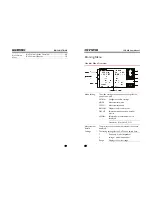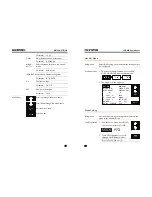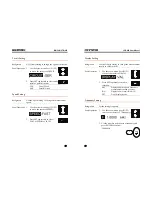
GETTING
STARTED
27
General
Capacitors
Capacitors are usually measured in series except
for extremely small capacitance. Like with
inductors, larger capacitors should be measured
with low frequencies. Small capacitors with high
frequencies.
Test
Frequency
Expected Capacitance
<10pF 10pF~400pF 400pF~1uF >1uF
0.1~0.12 kHz
Series
1kHz
Series
10kHz
Series or
Parallel
100kHz Parallel
General Resistors
A series inductance circuit is the best equivalent
circuit for low resistance (<1k
Ω
) and a parallel
capacitance circuit for high resistances (>10M
Ω
).
Test
Frequency
Expected Resistance
<1k
Ω
1k
Ω
~10M
Ω
>10M
Ω
0.03kHz
Parallel
0.25kHz
Parallel
1kHz Series
Metal component
case connection
A large area of metal can add noise to the
measurement. Here is how to minimize the effect.
If the metal is connected to one of the terminals,
this should be connected to the Hforce terminal
side.
If the metal is NOT connected to either of the
terminals, connect to the GND terminal.
Wire capacitance
When measuring the wire capacitance, the fixture
clips that are marked with H
F
(High Force)/H
S
(High Sense)
should always be connected to the
point that is influenced the most by noise.
LCR-800
User
Manual
28
Air-cored coils
Air-cored coils can pick up noise very easily,
therefore they should be kept well clear of any test
equipment that may contain power transformers or
display scan circuitry. Also, keep the coils away
from metal objects which may modify inductor
characteristics.
Iron-cored and
ferrite inductor
The effective value of iron-cored and ferrite
inductors can vary widely with magnetization and
test signal level. Measure them at the AC level and
frequency in use. Unlike most inductors, a parallel
equivalent circuit is most suitable for iron-cored
inductors. When core materials are damaged by
excessive magnetization (for example: tape heads
and microphone transformers), check that the test
signal is acceptable before connection.















































